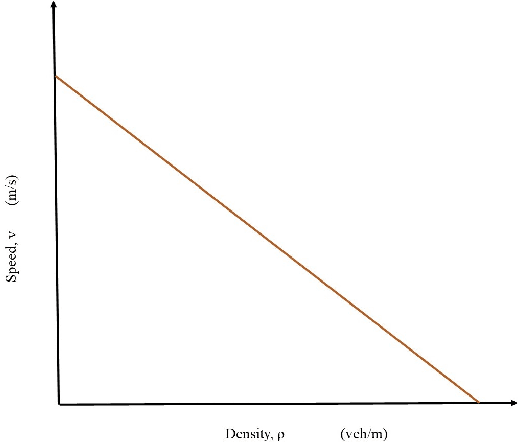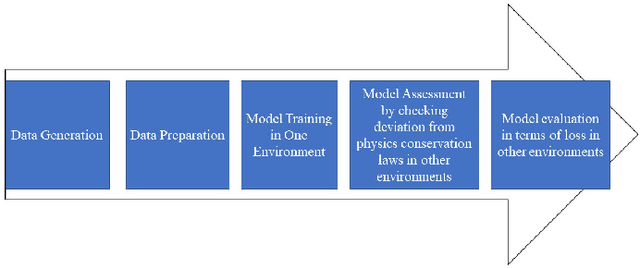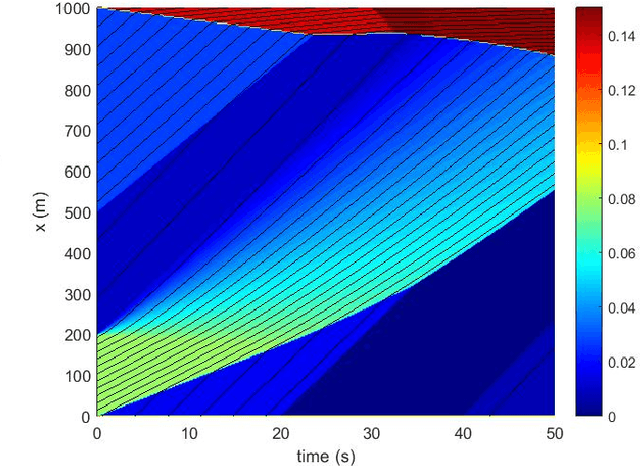Kamrul Hasan
AI-Driven Secure Data Sharing: A Trustworthy and Privacy-Preserving Approach
Jan 26, 2025Abstract:In the era of data-driven decision-making, ensuring the privacy and security of shared data is paramount across various domains. Applying existing deep neural networks (DNNs) to encrypted data is critical and often compromises performance, security, and computational overhead. To address these limitations, this research introduces a secure framework consisting of a learnable encryption method based on the block-pixel operation to encrypt the data and subsequently integrate it with the Vision Transformer (ViT). The proposed framework ensures data privacy and security by creating unique scrambling patterns per key, providing robust performance against adversarial attacks without compromising computational efficiency and data integrity. The framework was tested on sensitive medical datasets to validate its efficacy, proving its ability to handle highly confidential information securely. The suggested framework was validated with a 94\% success rate after extensive testing on real-world datasets, such as MRI brain tumors and histological scans of lung and colon cancers. Additionally, the framework was tested under diverse adversarial attempts against secure data sharing with optimum performance and demonstrated its effectiveness in various threat scenarios. These comprehensive analyses underscore its robustness, making it a trustworthy solution for secure data sharing in critical applications.
ViT Enhanced Privacy-Preserving Secure Medical Data Sharing and Classification
Nov 08, 2024Abstract:Privacy-preserving and secure data sharing are critical for medical image analysis while maintaining accuracy and minimizing computational overhead are also crucial. Applying existing deep neural networks (DNNs) to encrypted medical data is not always easy and often compromises performance and security. To address these limitations, this research introduces a secure framework consisting of a learnable encryption method based on the block-pixel operation to encrypt the data and subsequently integrate it with the Vision Transformer (ViT). The proposed framework ensures data privacy and security by creating unique scrambling patterns per key, providing robust performance against leading bit attacks and minimum difference attacks.
Visually Analyze SHAP Plots to Diagnose Misclassifications in ML-based Intrusion Detection
Nov 04, 2024



Abstract:Intrusion detection has been a commonly adopted detective security measures to safeguard systems and networks from various threats. A robust intrusion detection system (IDS) can essentially mitigate threats by providing alerts. In networks based IDS, typically we deal with cyber threats like distributed denial of service (DDoS), spoofing, reconnaissance, brute-force, botnets, and so on. In order to detect these threats various machine learning (ML) and deep learning (DL) models have been proposed. However, one of the key challenges with these predictive approaches is the presence of false positive (FP) and false negative (FN) instances. This FPs and FNs within any black-box intrusion detection system (IDS) make the decision-making task of an analyst further complicated. In this paper, we propose an explainable artificial intelligence (XAI) based visual analysis approach using overlapping SHAP plots that presents the feature explanation to identify potential false positive and false negatives in IDS. Our approach can further provide guidance to security analysts for effective decision-making. We present case study with multiple publicly available network traffic datasets to showcase the efficacy of our approach for identifying false positive and false negative instances. Our use-case scenarios provide clear guidance for analysts on how to use the visual analysis approach for reliable course-of-actions against such threats.
Advancing Healthcare: Innovative ML Approaches for Improved Medical Imaging in Data-Constrained Environments
Oct 16, 2024



Abstract:Healthcare industries face challenges when experiencing rare diseases due to limited samples. Artificial Intelligence (AI) communities overcome this situation to create synthetic data which is an ethical and privacy issue in the medical domain. This research introduces the CAT-U-Net framework as a new approach to overcome these limitations, which enhances feature extraction from medical images without the need for large datasets. The proposed framework adds an extra concatenation layer with downsampling parts, thereby improving its ability to learn from limited data while maintaining patient privacy. To validate, the proposed framework's robustness, different medical conditioning datasets were utilized including COVID-19, brain tumors, and wrist fractures. The framework achieved nearly 98% reconstruction accuracy, with a Dice coefficient close to 0.946. The proposed CAT-U-Net has the potential to make a big difference in medical image diagnostics in settings with limited data.
Enhancing UAV Security Through Zero Trust Architecture: An Advanced Deep Learning and Explainable AI Analysis
Mar 25, 2024Abstract:In the dynamic and ever-changing domain of Unmanned Aerial Vehicles (UAVs), the utmost importance lies in guaranteeing resilient and lucid security measures. This study highlights the necessity of implementing a Zero Trust Architecture (ZTA) to enhance the security of unmanned aerial vehicles (UAVs), hence departing from conventional perimeter defences that may expose vulnerabilities. The Zero Trust Architecture (ZTA) paradigm requires a rigorous and continuous process of authenticating all network entities and communications. The accuracy of our methodology in detecting and identifying unmanned aerial vehicles (UAVs) is 84.59\%. This is achieved by utilizing Radio Frequency (RF) signals within a Deep Learning framework, a unique method. Precise identification is crucial in Zero Trust Architecture (ZTA), as it determines network access. In addition, the use of eXplainable Artificial Intelligence (XAI) tools such as SHapley Additive exPlanations (SHAP) and Local Interpretable Model-agnostic Explanations (LIME) contributes to the improvement of the model's transparency and interpretability. Adherence to Zero Trust Architecture (ZTA) standards guarantees that the classifications of unmanned aerial vehicles (UAVs) are verifiable and comprehensible, enhancing security within the UAV field.
Science based AI model certification for untrained operational environments with application in traffic state estimation
Mar 21, 2024



Abstract:The expanding role of Artificial Intelligence (AI) in diverse engineering domains highlights the challenges associated with deploying AI models in new operational environments, involving substantial investments in data collection and model training. Rapid application of AI necessitates evaluating the feasibility of utilizing pre-trained models in unobserved operational settings with minimal or no additional data. However, interpreting the opaque nature of AI's black-box models remains a persistent challenge. Addressing this issue, this paper proposes a science-based certification methodology to assess the viability of employing pre-trained data-driven models in untrained operational environments. The methodology advocates a profound integration of domain knowledge, leveraging theoretical and analytical models from physics and related disciplines, with data-driven AI models. This novel approach introduces tools to facilitate the development of secure engineering systems, providing decision-makers with confidence in the trustworthiness and safety of AI-based models across diverse environments characterized by limited training data and dynamic, uncertain conditions. The paper demonstrates the efficacy of this methodology in real-world safety-critical scenarios, particularly in the context of traffic state estimation. Through simulation results, the study illustrates how the proposed methodology efficiently quantifies physical inconsistencies exhibited by pre-trained AI models. By utilizing analytical models, the methodology offers a means to gauge the applicability of pre-trained AI models in new operational environments. This research contributes to advancing the understanding and deployment of AI models, offering a robust certification framework that enhances confidence in their reliability and safety across a spectrum of operational conditions.
Intelligent Railroad Grade Crossing: Leveraging Semantic Segmentation and Object Detection for Enhanced Safety
Mar 17, 2024Abstract:Crashes and delays at Railroad Highway Grade Crossings (RHGC), where highways and railroads intersect, pose significant safety concerns for the U.S. Federal Railroad Administration (FRA). Despite the critical importance of addressing accidents and traffic delays at highway-railroad intersections, there is a notable dearth of research on practical solutions for managing these issues. In response to this gap in the literature, our study introduces an intelligent system that leverages machine learning and computer vision techniques to enhance safety at Railroad Highway Grade crossings (RHGC). This research proposed a Non-Maximum Suppression (NMS)- based ensemble model that integrates a variety of YOLO variants, specifically YOLOv5S, YOLOv5M, and YOLOv5L, for grade-crossing object detection, utilizes segmentation techniques from the UNet architecture for detecting approaching rail at a grade crossing. Both methods are implemented on a Raspberry Pi. Moreover, the strategy employs high-definition cameras installed at the RHGC. This framework enables the system to monitor objects within the Region of Interest (ROI) at crossings, detect the approach of trains, and clear the crossing area before a train arrives. Regarding accuracy, precision, recall, and Intersection over Union (IoU), the proposed state-of-the-art NMS-based object detection ensemble model achieved 96% precision. In addition, the UNet segmentation model obtained a 98% IoU value. This automated railroad grade crossing system powered by artificial intelligence represents a promising solution for enhancing safety at highway-railroad intersections.
Empowering Healthcare through Privacy-Preserving MRI Analysis
Mar 14, 2024Abstract:In the healthcare domain, Magnetic Resonance Imaging (MRI) assumes a pivotal role, as it employs Artificial Intelligence (AI) and Machine Learning (ML) methodologies to extract invaluable insights from imaging data. Nonetheless, the imperative need for patient privacy poses significant challenges when collecting data from diverse healthcare sources. Consequently, the Deep Learning (DL) communities occasionally face difficulties detecting rare features. In this research endeavor, we introduce the Ensemble-Based Federated Learning (EBFL) Framework, an innovative solution tailored to address this challenge. The EBFL framework deviates from the conventional approach by emphasizing model features over sharing sensitive patient data. This unique methodology fosters a collaborative and privacy-conscious environment for healthcare institutions, empowering them to harness the capabilities of a centralized server for model refinement while upholding the utmost data privacy standards.Conversely, a robust ensemble architecture boasts potent feature extraction capabilities, distinguishing itself from a single DL model. This quality makes it remarkably dependable for MRI analysis. By harnessing our groundbreaking EBFL methodology, we have achieved remarkable precision in the classification of brain tumors, including glioma, meningioma, pituitary, and non-tumor instances, attaining a precision rate of 94% for the Global model and an impressive 96% for the Ensemble model. Our models underwent rigorous evaluation using conventional performance metrics such as Accuracy, Precision, Recall, and F1 Score. Integrating DL within the Federated Learning (FL) framework has yielded a methodology that offers precise and dependable diagnostics for detecting brain tumors.
An Explainable AI Framework for Artificial Intelligence of Medical Things
Mar 07, 2024Abstract:The healthcare industry has been revolutionized by the convergence of Artificial Intelligence of Medical Things (AIoMT), allowing advanced data-driven solutions to improve healthcare systems. With the increasing complexity of Artificial Intelligence (AI) models, the need for Explainable Artificial Intelligence (XAI) techniques become paramount, particularly in the medical domain, where transparent and interpretable decision-making becomes crucial. Therefore, in this work, we leverage a custom XAI framework, incorporating techniques such as Local Interpretable Model-Agnostic Explanations (LIME), SHapley Additive exPlanations (SHAP), and Gradient-weighted Class Activation Mapping (Grad-Cam), explicitly designed for the domain of AIoMT. The proposed framework enhances the effectiveness of strategic healthcare methods and aims to instill trust and promote understanding in AI-driven medical applications. Moreover, we utilize a majority voting technique that aggregates predictions from multiple convolutional neural networks (CNNs) and leverages their collective intelligence to make robust and accurate decisions in the healthcare system. Building upon this decision-making process, we apply the XAI framework to brain tumor detection as a use case demonstrating accurate and transparent diagnosis. Evaluation results underscore the exceptional performance of the XAI framework, achieving high precision, recall, and F1 scores with a training accuracy of 99% and a validation accuracy of 98%. Combining advanced XAI techniques with ensemble-based deep-learning (DL) methodologies allows for precise and reliable brain tumor diagnoses as an application of AIoMT.
"When Words Fail, Emojis Prevail": Generating Sarcastic Utterances with Emoji Using Valence Reversal and Semantic Incongruity
May 06, 2023



Abstract:Sarcasm pertains to the subtle form of language that individuals use to express the opposite of what is implied. We present a novel architecture for sarcasm generation with emoji from a non-sarcastic input sentence. We divide the generation task into two sub tasks: one for generating textual sarcasm and another for collecting emojis associated with those sarcastic sentences. Two key elements of sarcasm are incorporated into the textual sarcasm generation task: valence reversal and semantic incongruity with context, where the context may involve shared commonsense or general knowledge between the speaker and their audience. The majority of existing sarcasm generation works have focused on this textual form. However, in the real world, when written texts fall short of effectively capturing the emotional cues of spoken and face-to-face communication, people often opt for emojis to accurately express their emotions. Due to the wide range of applications of emojis, incorporating appropriate emojis to generate textual sarcastic sentences helps advance sarcasm generation. We conclude our study by evaluating the generated sarcastic sentences using human judgement. All the codes and data used in this study will be made publicly available.
 Add to Chrome
Add to Chrome Add to Firefox
Add to Firefox Add to Edge
Add to Edge